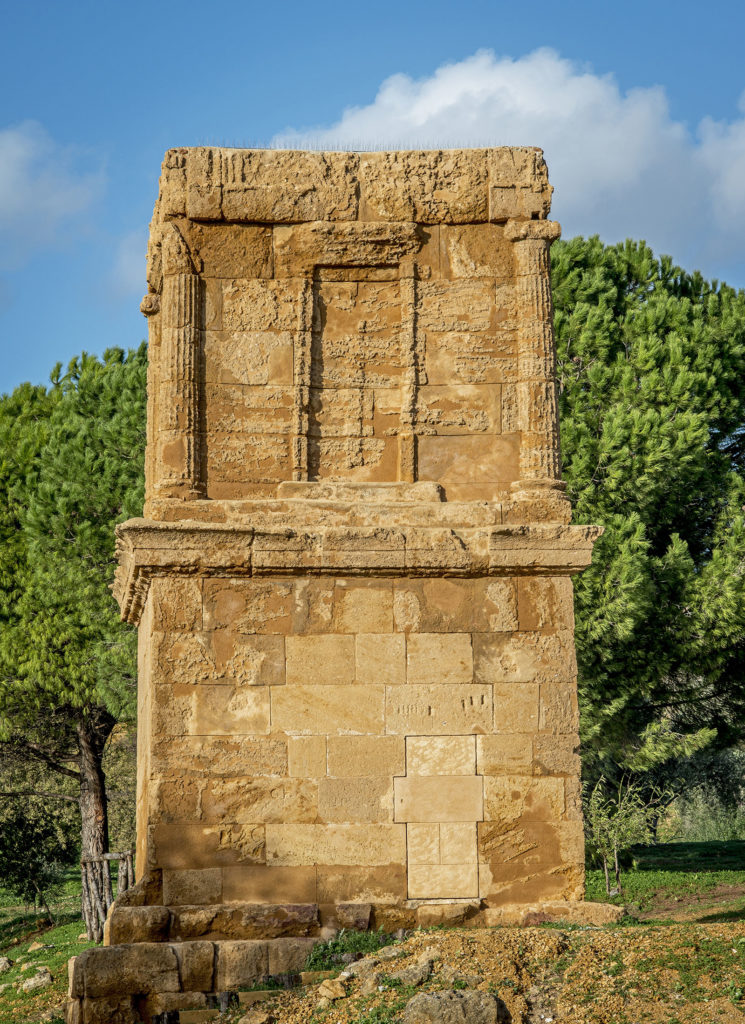Despite its name, the monument has nothing to do with
Theron
, the tyrant of Akragas in the 5th century BC: the name was given by travellers on the
Grand Tour
, who at the turn of the 18th and 19th centuries came in great numbers to admire the Valley of the Temples. It is a funerary tower building from the 1st century BC, whose structure is reminiscent of that of a small temple with a square plan with angular Doric columns and a frieze decorated with metopes and triglyphs.

The structure has been identified in similar burial monuments in North Africa, confirming the melting pot of traditions and cultures that mixed with Agrigentum. Not far from the Temple of Hercules, the building was part of the Giambertoni Necropolis.
In the 18th century the Tomb of Theron was used as a sheepfold for sheep and
Girgentana goats
which have colonised the ruins of the surrounding area since the Middle Ages.
The numerous pictorial – then photographic – depictions of it between the 18th and 19th centuries show it surrounded by goats and sheep.